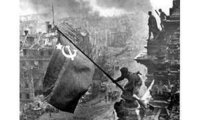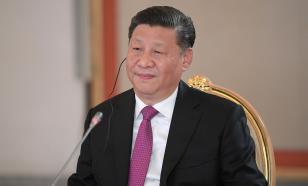Who hoisted Victory Banner over Reichstag?
Two unquestionably greatest events of the last century for Russia - the victory in the Great Patriotic War and the first flight into space - are shrouded with myths. The same story is with the hoisting of the Victory Banner over the Reichstag. For decades, we knew that it was Kantaria and Yegorov who did it. However, there were a number of episodes of hoisting the flag over the defeated Reichstag, and it is not important who was there first. Every soldier of the Great Patriotic War took part in it.

I got to see a piece of the Reichstag wall painted by Soviet soldiers who took Berlin in 1945. The Germans kept it in the united Germany, but it can be seen only if you get into the building of the current Bundestag through the special entrance for deputies. It is not shown to ordinary tourists. Actually, there is not much to see: it looks new, with several neat inscriptions in Russian.
It is not about the lack of the trace of burns and blood or swear words on it. This is done not only in Germany, where the Buchenwald concentration camp bunks smell of fresh wood. Behind the glass windows of the museum you can see shoes of the children who never had a chance to grow up, and a lamp with a shade made of the tattooed skin of a Soviet prisoner of war, and so much more, but the wood is still fresh.
For nearly half a century, the Soviet people knew that the Victory Banner over the Reichstag on May 1, 1945 was placed by the regimental soldiers M. Yegorov and M. Kantaria. The Russian soldier was a representative of the titular nation, whose heroism will be discussed by Stalin, while the Georgian was a compatriot of the Generalissimo, and Labor Day, too, was not chosen by chance, but was very symbolic.
In carrying out the task set by the Supreme Commander in November of 1944 "To finish off the fascist beast in its own lair, and hoist the banner of victory over Berlin", parts of the 171st Infantry Division of Colonel Negoda and the 150th Infantry Division of Major-General Shatilov nearly simultaneously broke into in the Reichstag. Then Zhukov told Stalin that "part of the 3rd Shock Army has occupied the main building of the Reichstag and at 14:25 on April 30 raised the Soviet flag over it."
Then the researchers found that there were several banners hastily constructed by the units that stormed the Reichstag. Neither the soldiers nor their commanders knew how many of these banners were made of the fabric taken from German shops. According to the chief keeper of the Victory Banner, Great Patriotic War II veteran Arkady Dementiev, the first on the roof of the German parliament on April 30 were the men of the 79th Rifle Corps commanded by Captain Makov: Minin, Bobrov, and Zagitov, Lisiminenko. Likely, the first Victory Banner was hoisted over the highest sculpture of the Reichstag - the Goddess of Victory.
Then the same thing was done by others. The flag of Idritskaya 150th Infantry Division hoisted by Alexei Berestov, Mikhail Yegorov and Meliton Kantaria was the fourth. It soared into the sky of Berlin at 3AM on 1 May and remained standing after the enemy's night shelling of the Reichstag roof that destroyed a glass dome and three other victorious flags.
Some commentators see nearly a conspiracy and an attempt to deliberately confuse the story about the people who first raised the flag above the dome of the Reichstag. It seems that this is not true.
The heroic deeds of Gastello and Matrosov who were not the first ones are not "secondary." The same is true in the case of the Victory Banner. Yes, the descendants want to know the truth about the war and the names of its heroes, but in contrast to the ambitious athletes who certainly strive to be the first, the soldiers had other stimulus.
The war propaganda was in need of specific names. For this purpose, the primacy and personal ambition did not matter. It is possible that by exploiting these feelings and attitudes, the propaganda was right in its attempt to show that the victory was forged by a collective effort rather than recognizing the merit of separate individuals.
In the deepest sense, the Victory Banner was hoisted by everyone: a young border guard of the Brest Fortress who took a bullet at the dawn of June 22 of 1941, those who went through the siege of Leningrad, and workers evacuated to the Urals. Let's express our gratitude to all of them.
Igor Bukker
Pravda.Ru
Subscribe to Pravda.Ru Telegram channel, Facebook, RSS!


